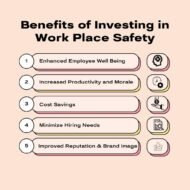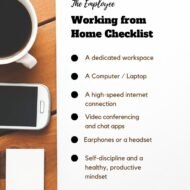Posted by Managementguru in How To, Relationships
on Aug 7th, 2023 | 0 comments

Domestic abuse is still more widespread than many people care to believe in the 21st century and that’s why it’s imperative to understand exactly what it is and what can be done about it. As defined by the CDC, domestic abuse is also referred to as “intimate partner violence”. Domestic abuse or violence can occur between heterosexual as well as same-sex couples. 1 in 4 women is reported to have experienced some form of domestic violence with ‘only’ 1 in 9 men reporting being victimized. In other words, women are more than twice as likely to be the victims of domestic abuse, and it is to them that we speak today. Here are three things every woman should know. 1. It Is a Crime in All States Although domestic violence is a crime in all states, each state has similar but different wording within the law. In Illinois, for example, the laws are set forth in the Illinois Domestic Violence Act that clearly defines exactly what constitutes domestic violence, DV, and what the consequences for being found guilty could be. Also, you should know that if you have been a victim of DV, you have the right to be compensated for any injuries, physical or emotional, you have received. This would be where you would consult with an Illinois lawyer for abuse to seek the compensation you so rightfully deserve. Also, as stated in the law, DV relates to any intimate relationship, so it is not only violence perpetrated by a husband. Any person a woman is romantically involved with can be the perpetrator, and they don’t even need to be sexually involved either! 2. There Is No Need to Suffer in Silence Often, women suffer in silence. Sometimes it is fear of being victimized even more severely. Men know that it is a criminal act to abuse or violate their partner, yet they are not always in control of their actions. You should know that help is out there and if you are uncertain where to find it, one thing you can do is go to the emergency room at a local hospital. They will help you find resources to ensure your safety and at the very least call law enforcement for you if you fear for your safety. There is a National Domestic Violence Hotline you can also call, and all calls are confidential. They will tell you where Domestic Abuse Shelters are in your area and can help put you in touch with other resources as well. 3. It Is in Your Power to Put an End to It From filing a restraining order to seeking shelter in a Domestic Violence Shelter for women, there is always something you can do to put an end to it. There is no need to continue suffering abuse and if you think it will ‘get better,’ 99.9% of the time it will NOT end without intervention. Being the victim of DV is no longer the societal stigma it once was and few people ‘blame’ the woman anymore. You are urged to be strong and proactive. Take steps to protect yourself from further abuse because no one deserves to be the recipient of violence. If nothing else, contact that domestic abuse lawyer mentioned above. They can point you in the right direction to get the help you need....

Posted by Managementguru in Branding, Marketing, Sales, Social Media
on Jul 14th, 2023 | 0 comments

In today’s fiercely competitive business landscape, standing out from the crowd is critical for success. Effective marketing plays a pivotal role in capturing the attention of your target audience and differentiating your business from competitors. This blog post will explore the art of marketing and provide actionable strategies to help your business rise above the noise. Understanding Your Audience Understanding your audience is the foundation of effective marketing. Take the time to carry out in-depth market research and gather valuable insights about your target customers. Start by identifying demographic information such as age, gender, location, and income level. Dig deeper to uncover psychographic details like their interests, values, lifestyle choices, and pain points. Make use of various research methods, including surveys, interviews, and social media monitoring, to gather information about your audience. Look for patterns among your existing customers and use this data to develop comprehensive buyer profiles. These profiles serve as hypothetical depictions of your ideal clients, which allow you to better tailor your marketing messages to resonate with their specific needs and desires. Building a Strong Brand Identity A strong brand identity sets your business apart from the competition and leaves a lasting impression on your audience. It encompasses various elements such as your brand name, logo, tagline, color palette, typography, and tone of voice. Start by defining your brand’s values, mission, and unique selling proposition. Craft a compelling brand story that reflects the essence of your business and communicates your values in an authentic and relatable manner, and consistently use this story across all marketing channels to build a cohesive and memorable brand experience. Lastly, design a visually appealing workplace that reflects your values and resonates with your target audience. Creating Engaging Content Creating engaging content is a key component of effective marketing. It involves developing high-quality, valuable, and relevant content that captures the attention of your target audience and encourages them to take action. Start by understanding the pain points, interests, and needs of your audience, and tailor your content to address those effectively. Use a mix of formats such as blog posts, videos, infographics, podcasts, and interactive content to cater to different learning preferences and engage your audience across various channels. Focus on providing informative and actionable content that solves problems, educates, and entertains your audience. For example, a construction company could craft blog posts around popular topics, such as picking the right steel erection services for your needs, to share knowledge and to help them become seen as a thought-leader in their market. Remember to tell compelling stories that resonate with your target customers, showcasing how your products or services can enhance their lives or solve their challenges, to increase your brand identity. Crafting a Unique Value Proposition Your value proposition is the unique value that you offer to your customers. It is the answer to the question, “Why should customers choose your business over competitors?” To craft a compelling value proposition, consider the key benefits and solutions your product or service provides. Identify the primary pain points your target audience faces and emphasize how your product or service addresses those pain points. Highlight the unique features, quality, convenience, or affordability that sets your business apart, and use clear and concise language to communicate your value proposition, making it easy for your audience to understand and remember. Try to test different value propositions and refine them based on customer feedback and market response. A well-crafted value proposition not only differentiates your business but also creates a strong motivation for customers to choose your products or services. Leveraging Digital Channels In today’s digital age, leveraging digital channels is vital for marketing success. Establish a...

Posted by Managementguru in Employee Safety, Human Resource, Productivity, Work Environment
on Jul 11th, 2023 | 0 comments

In today’s rapidly changing business landscape, organisations are constantly looking for ways to enhance their performance and maintain a competitive edge. While many factors contribute to a company’s success, one aspect that should never be overlooked is workplace safety. Investing in safety measures not only protects employees from harm but also yields significant benefits for businesses. In this article, we will explore why workplace safety is a smart business decision, considering both the immediate and long-term advantages it offers. Enhanced Employee Well-being By prioritising workplace safety, organisations demonstrate a commitment to the well-being of their employees. Safe working conditions foster a sense of trust, respect, and loyalty among the workforce. When employees feel safe and valued, their morale and job satisfaction increase, leading to improved productivity and reduced turnover rates. Something as simple as a good pair of work boots could save lives with a prevented slip, so investing in quality will be felt throughout the organisation. Increased Productivity and Efficiency Safety investments often go hand in hand with process improvements and risk mitigation strategies. Implementing safety protocols and providing necessary training equips employees with the knowledge and tools to perform their tasks efficiently and effectively. By reducing the likelihood of accidents, injuries, and illnesses, businesses can minimise downtime, maintain continuity in operations, and optimise productivity levels. Safe work environments also promote better focus and concentration, leading to higher quality output and fewer errors. Cost Savings Investing in workplace safety can result in substantial cost savings for businesses in the long run. While there may be upfront expenses associated with safety equipment, training, and compliance, these investments can significantly reduce the financial burden of accidents, injuries, and workers’ compensation claims. By preventing workplace incidents, companies avoid the direct costs of medical expenses, legal fees, and property damage. It helps to bear in mind that businesses with strong safety records often benefit from lower insurance premiums and improved employee insurance coverage terms. Improved Reputation and Brand Image Companies that prioritise safety earn a reputation as responsible and ethical employers. A strong safety culture becomes a valuable selling point for attracting top talent, as job seekers are increasingly concerned about the work environment. By creating a safe and healthy workplace, businesses can differentiate themselves from competitors and build a positive brand image that resonates with customers, partners, and stakeholders. Such a reputation can lead to increased customer loyalty, trust, and ultimately, improved business performance. Compliance with Legal and Regulatory Requirements Workplace safety is not just a moral obligation; it is also a legal requirement. Governments and regulatory bodies set specific standards and guidelines to protect employees’ rights and ensure their safety at work. Investing in safety measures allows businesses to comply with these regulations, avoiding potential penalties, fines, and legal disputes. By staying updated with safety regulations, organisations can demonstrate their commitment to ethical practices and create a culture of compliance, further bolstering their reputation. Investing in workplace safety is undeniably a smart business decision with far-reaching benefits. As businesses navigate the complexities of the modern world, incorporating workplace safety into their strategic plans is not only the right thing to do but also a wise investment that pays off in more ways than...

Posted by Managementguru in Entrepreneurship, Human Resource, Organisational behaviour, Work Environment
on Jul 7th, 2023 | 0 comments

Depending on who you are, you will either love, hate, or be neutral about working. Either way, the reality that most of us have to face is that we must work, and we spend the majority of our time working. As such, it would be great if you felt safe and comfortable when working. However, this is often not the case. If you want to find ways to create a supportive working environment that fosters good health and wellbeing, then this article is just for you. 1. Make sure there is a good work-to-life balance If you work regularly and for many hours, it can be all too easy to spend too much time working. How do you know if you are spending too much time working? Well, it is pretty obvious that you are doing too much if you find yourself having little or practically zero time to do things other than work. Of course, for some professions, this is inescapable. However, it is important to find a balance between work and other aspects of your life for your own mental health and physical wellbeing. If you exert too much of your time and energy into working, your health will most likely decline, and you put yourself at greater risk of burning out. So, even if it is only an hour or two each day, it is important that you spend some time doing things that you love. This will, in turn, ensure that your working environment is more pleasurable as you will less likely associate it with negative sentiments. If your company does not do so already, try and create some social events for everyone to get involved with so they too can enjoy being at work. 2. Treat everyone with respect No matter who we are or what we have done, everyone is entitled to some degree of respect. If the working environment is a supportive one, everyone will respect and treat each other with care. There are a number of ways to foster meaningful respect at work which include finding common ground, paying attention to details, and being considerate and non-judgemental. While some of these traits may seem difficult to obtain, practice makes perfect. It is unlikely that you will master it first try; however, what is important is that you persevere for the sake of yourself, for others, and for the company. By doing so, you can help to reduce employee negativity. 3. Acknowledge and reward achievements Another great way to create a supportive work environment is by acknowledging and rewarding achievements. If you notice that a particular employee or colleague has gone above and beyond, or simply that they have worked well, it is important that their work does not go unrecognized. Instead, make sure to reward them. If you can do this, they will be more likely to feel valued, appreciated, and cherished and will enjoy being at work more. It can be as simple as rewarding them with their favorite chocolate or perhaps an experience that they have always wanted to...

Posted by Managementguru in Human Resource, Productivity
on Jul 4th, 2023 | 0 comments

Every employer that can, needs to allow their employees to work from home as often as they can. Allowing remote and hybrid working is just smart. It’s how employers like yourself can offer perks that matter most and keep employees for longer. Think they’ll get distracted when working from home? They’re just as distracted at work. If someone comes and asks someone else a question, or just engages in small talk, that’s distracting. In fact, you’re actually more likely to have distracted employees in the office than at home. That being said, WFH can only be possible if the setup at home is good enough. At a minimum, employees need a computer and fast enough internet to seamlessly remote in to the computers that you have at the office. They can then control the computer as they would if they were in the office, only without having to come in. If you need them to be more engaged, then they’ll need an even more advanced setup. It’s perfectly reasonable to only allow WFH if and when your employees’ home offices fulfil this checklist: Fast Enough Internet Fast internet is the bare standard. Set the minimum, and even find better internet for working from home yourself. If your area is covered by fiber optics, for example, you can request that employees who work from home have that internet. Depending on what their job entails, you can even require them to have 1gbps speeds for seamless remote work. A Computer That Can Handle Their Job If your employees work from home the majority of the time, you can also downsize your office and save so much on rent and utilities, but unless you’re providing them with the computer anyway, you’ll want to add some hardware and software requirements for staff who want to work from home either full-time or most-of-the-time. This is particularly important when it comes to security measures and special software. Again, you can get around this most of the time by just using a remote-in system. This way, your computers can have the software and files needed, and your employees just need to be able to run that remote-in software, but it’s up to you and your workflows. Good Quality Video and Audio Seeing someone in crystal clear definition can improve the camaraderie and also communication. That’s why you’ll need your employees to have an HD camera setup and professional mike. These two things alone will help improve the quality of remote meetings and the engagement levels of all your staff. A Great Printer Even with a digital-first mindset, there will always be instances where things need to be printed, scanned, and sent over. That’s why you’ll need your WFH staff to have a great printer that can do it all, and fast. For best results, give your employees a checklist with specific requirements, including the system requirements. This is an absolutely fair compromise if you’re wary of allowing WFH to continue. From there, it’s just a matter of changing your management approach towards a results-focused approach, rather than a time-focused approach. Do this, and you will attract amazing talent that will work hard to stay in such a wonderful working...










